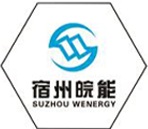
10 月 . 05, 2024 02:32
Back to list
Design and Implementation of a Pressure Reduction Skid System for Industrial Applications
Understanding Pressure Reduction Skids An Essential Component in Process Industries
In numerous industrial applications, the management of pressure is a critical factor to ensure efficiency, safety, and compliance with regulatory standards. One of the pivotal solutions employed to regulate pressure is the pressure reduction skid. This article delves into the mechanics, applications, and benefits of pressure reduction skids in various sectors.
A pressure reduction skid is essentially a pre-engineered package designed to regulate high pressure down to a desired lower pressure. These skids typically consist of various components, including valves, pressure regulators, piping, and instrumentation, all mounted on a structural frame. The benefit of a skid system lies in its modular design, which allows for easy integration into existing facilities while ensuring a compact footprint.
The primary function of a pressure reduction skid is to safeguard downstream equipment by preventing overpressure situations. For instance, in natural gas distribution systems, pressure reduction skids ensure that gas delivered to consumers maintains a regulated and safe pressure. They play a similar role in process industries where maintaining specific pressure levels is essential for optimizing operational efficiency and ensuring the safety of personnel and equipment.
pressure reduction skid

Pressure reduction skids are especially prevalent in oil and gas, chemical manufacturing, and water treatment industries. In the oil and gas sector, these skids manage the pressure from pipelines before it enters processing plants or consumer setups, mitigating risks associated with high-pressure environments. In chemical processing, precise pressure control can significantly influence reaction rates, product quality, and overall yield. Water treatment facilities also utilize pressure reduction skids to manage water pressure across treatment processes, ensuring the right flow rates and treatment conditions.
Besides their core function of pressure regulation, pressure reduction skids offer several advantages. Firstly, their prefabricated nature allows for rapid deployment, reducing installation time and associated costs. Additionally, these skids can be customized to meet specific operational requirements, allowing for flexibility in various applications. Modern skids are also equipped with advanced monitoring and safety features, including pressure gauges, automatic shutdown systems, and remote monitoring capabilities that enhance operational safety and reliability.
Moreover, utilizing pressure reduction skids can lead to energy savings. By maintaining optimal pressure levels, facilities can enhance energy efficiency, reduce wastage, and extend the lifespan of downstream equipment. As industries increasingly focus on sustainability and reducing their carbon footprint, the role of these skids in optimizing resource use becomes more significant.
In conclusion, pressure reduction skids are indispensable components in various industrial applications. Their ability to safely manage pressure levels not only protects equipment and personnel but also enhances operational efficiency and sustainability. As industries continue to evolve and embrace advanced technologies, the design and functionality of pressure reduction skids will likely advance, further solidifying their role as a cornerstone of industrial operations. Understanding and implementing these systems holistically can yield significant benefits, paving the way for safer and more efficient industrial environments.
Next:
Latest news
-
Unlocking The Quality Gas Pressure ReducersNewsNov.01,2024
-
The Role of Gas Pressure Reducing StationsNewsNov.01,2024
-
The Importance and Functionality of Safety Relief ValvesNewsNov.01,2024
-
The Essential Role of Safety Valves in Natural Gas ApplicationsNewsNov.01,2024
-
The Essential Role of Gas Pressure RegulatorsNewsNov.01,2024
-
Enhance Your Premium Gas FiltersNewsNov.01,2024

